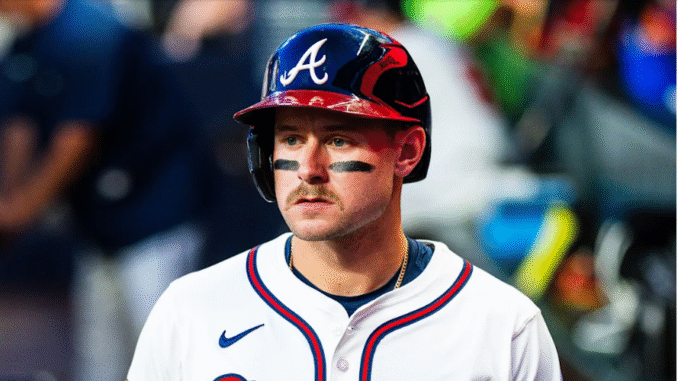
When the Atlanta Braves pulled the trigger on a multi-layered trade to acquire Jarred Kelenic, they envisioned a young, high-upside left-handed hitter who could round out their outfield both defensively and offensively. Instead, what they got was a cautionary tale in roster construction, financial maneuvering, and player projection gone awry.
Kelenic, once one of baseball’s most hyped prospects, had yet to establish himself at the Major League level despite flashes of potential. The Braves chose to bet on that upside, hoping a change of scenery and a winning culture would unlock the talent the Mariners couldn’t. But the cost was steep—not just in money, but in roster flexibility and overall team-building efficiency.
A Complicated Deal with a Simple Target
The Braves’ primary goal in their December 2023 series of transactions was to acquire Kelenic. But getting him meant absorbing significant financial baggage. Seattle unloaded not only Kelenic, but also the underwater contracts of Marco Gonzales and Evan White. In exchange, the Braves agreed to take on nearly $20 million in commitments—most of which would never contribute meaningfully on the field.
Rather than simply eating those deals, the Braves opted to flip Gonzales and White in rapid succession, sparking a flurry of secondary trades involving David Fletcher and Max Stassi. Each layer of complexity added more payroll implications and created additional roster churn.
At the end of the day, the Braves spent somewhere between $17–21 million in actual and luxury-tax dollars to land Kelenic, according to multiple breakdowns. Braves beat writer Mark Bowman reported a $17 million figure, but that number only scratches the surface of the broader financial gymnastics.
What the Braves Got in Return
What the Braves ultimately acquired was a glove-first outfielder who, to this point, looks more like a fringe starter than a breakout star. Kelenic has shown modest improvements, but the same problems that plagued him in Seattle—high strikeout rates, poor pitch recognition, and streaky production—remain.
His brief hot streak in early 2023 (.982 OPS in March/April) was followed by a sharp regression and a foot injury stemming from an emotional outburst. While his defensive metrics are solid, they don’t justify the cost of acquisition for a team operating near the competitive balance tax threshold.
Lessons in Simplicity and Prudence
The Braves, typically lauded for their sharp trades and savvy financial maneuvering, may have overcomplicated what should have been a straightforward pursuit of talent. If they had taken only Gonzales’ deal to acquire Kelenic, the damage might have been limited. But taking on multiple bad contracts, then having to move those players again while absorbing even more payroll, created a domino effect that hurt the team’s financial and strategic position.
In hindsight, the Braves overestimated Kelenic’s readiness to contribute meaningfully, and underestimated the long-term impact of adding contractual dead weight to a roster already brushing against tax penalties.
A Move That Didn’t Match the Model
For an organization known for calculated efficiency, the Kelenic trade stands out as an uncharacteristic misfire. The front office clearly saw something they believed in, but the results so far don’t justify the effort or the price tag. Unless Kelenic makes a significant leap, the Braves will look back on this trade as a rare instance where ambition and optimism overtook prudence and patience.
Leave a Reply